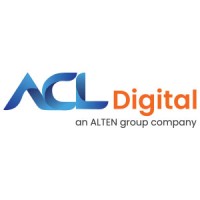Description
Description
This position is looking for a candidate with specific ADA accessibility experience.
This position will manage the design and implementation of the IT accessibility programs for the Colorado Department of Human Services (CDHS). The incumbent will act as a liaison and coordinator for the activities of various parties, including the Department, the Office of Information Technology's (OIT) technology accessibility program team, Division technology team members, and Division website content contributors. It will also manage and track the prioritization and utilization of funds, program performance metrics, and increase internal capacity by following Department best practices.
The effort will include testing and remediation of CDHS internet and intranet sites and software solutions. Any solutions that are not compliant with Web Content Accessibility Guidelines (WCAG) 2.1 or do not comply with the Colorado Laws for Persons with Disabilities (HB 21-1110), Sections 504 and 508 of the Rehabilitation Act of 1973, Title II of the Americans with Disabilities Act of 1990, Section 1557 of the Patient Protection and Affordable Care Act of 2010, or the Colorado Anti-Discrimination Act (CADA) will require remediation. Providing accessible IT services will substantially decrease the risk of future fines and litigation per HB 21-1110 and disability discrimination investigations by state and federal enforcement agencies. It will ensure the Department complies with applicable laws and accessibility guidelines.
The Project Manager is responsible for planning, executing, and timely completing accessibility projects within scope and budget.
1. Project Planning:
a. Define project scope, objectives, and deliverables.
b. Develop detailed project plans, including timelines, resource allocation, and budget estimates.
c. Create and maintain project documentation, including project charters, schedules, and risk assessments.
2. Team Management:
a. Lead cross-functional project teams, including developers, testers, designers, and other relevant stakeholders.
b. Assign tasks and responsibilities to team members.
c. Ensure effective communication and collaboration among team members.
3. Budget and Resource Management:
a. Monitor project budget and resource allocation.
b. Identify and address budget discrepancies and resource constraints.
c. Optimize resource utilization and project costs.
4. Risk Management:
a. Identify potential project risks and develop mitigation strategies.
b. Monitor and track project risks and issues.
c. Implement risk response plans as needed.
5. Quality Assurance:
a. Establish and maintain project quality standards.
b. Conduct quality checks and ensure compliance with project requirements.
c. Implement quality improvement processes as necessary.
The project manager will develop and implement change management strategies, plans, and communication initiatives to ensure the successful adoption of accessibility changes across the organization.
1. Strategy:
a. Collaborate with senior leadership and project teams to define and develop change management strategies aligned with the organization's objectives.
b. Assess the impact of changes and create plans to address resistance and potential obstacles.
2. Planning and Execution:
a. Create detailed change management plans, including communication, training, and stakeholder engagement strategies.
b. Implement and oversee the execution of change management plans, ensuring timely and effective delivery.
3. Stakeholder Engagement:
a. Identify and analyze stakeholders affected by changes.
b. Develop engagement plans to involve stakeholders and gain their support.
c. Maintain open lines of communication with stakeholders to address concerns and provide updates.
4. Communication:
a. Design and execute clear and effective communication plans that convey the benefits, purpose, and progress of changes to employees.
b. Create various communication materials, such as emails, newsletters, and presentations.
5. Resistance Management:
a. Identify sources of resistance and develop strategies to mitigate resistance to change.
b. Provide support to individuals and teams experiencing difficulties in adapting to change.
Reporting and risk management mitigation are essential components of any project or organizational strategy. Effective reporting helps stakeholders understand the project's current state, while risk management mitigation ensures that potential issues are identified and addressed proactively.
1. Regular Reporting:
a. Develop a schedule for regular reporting to provide stakeholders with consistent updates on the project's status.
b. Include a section on risk reporting in the regular updates.
c. Cover any identified risks, their impact, and the progress of risk mitigation efforts.
2. Risk Identification:
a. Regularly assess and identify potential risks. Encourage team members to report identifiable threats.
b. Evaluate each risk's potential impact, likelihood, and urgency. Prioritize risks based on these factors.
3. Risk Mitigation Plans:
a. Develop clear mitigation plans for high-priority risks and outline specific actions to minimize or eliminate the threat.
b. Maintain a risk register that includes details on each identified risk, its status, and the assigned responsibilities for mitigation.
4. Contingency Planning:
a. Develop contingency plans for risks where full mitigation is not possible. These plans should outline how to respond if a threat materializes.
A PMP and three years of experience is required, or five years of project management experience without a PMP. Understanding of WCAG, Sections 504 and 508 of the Rehabilitation Act of 1973, Title II of the Americans with Disabilities Act of 1990, Section 1557 of the Patient Protection and Affordable Care Act of 2010, or the Colorado Anti-Discrimination Act (CADA) a plus.
Employer-provided
Education
Any Graduate
- Posted On: 10-Dec-2024
- Experience: 5+ years of experience
- Openings: 1
- Category: Project Manager
- Tenure: Flexible Position

